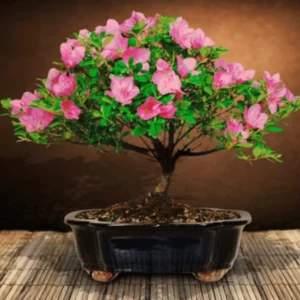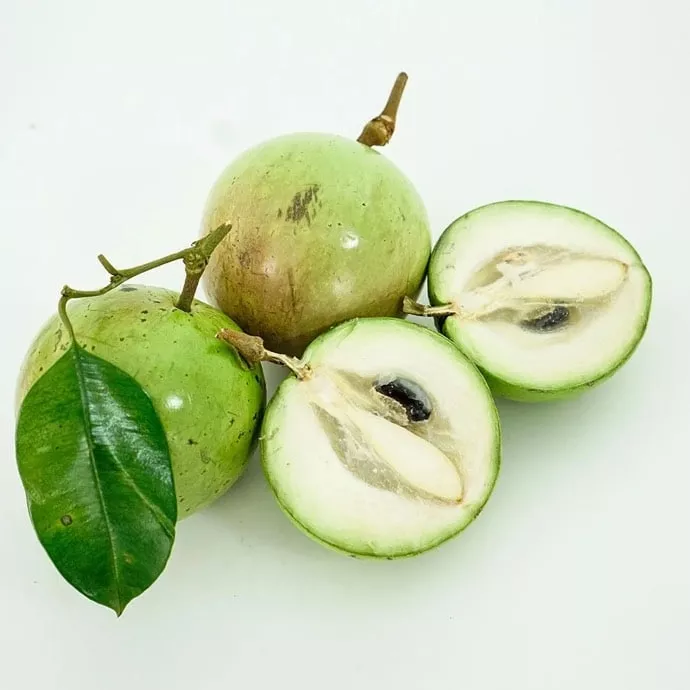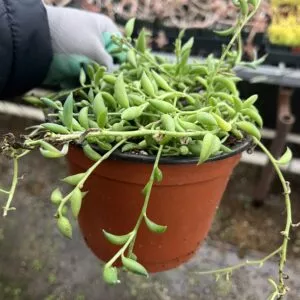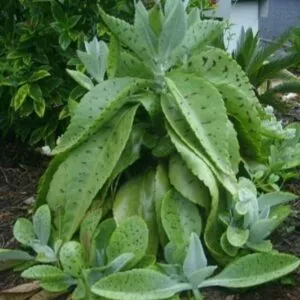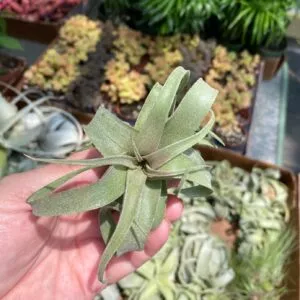No products in the cart.
Table of Contents
Do you love spring-blooming Azaleas? Then brace yourself as you will adore the Encore Azaleas. Now, you may wonder why we chose this Rhododendron spp. Well, it blooms in spring, summer, and fall.
The Encore Azalea starts with a bloom cycle in spring, followed by new growth to set buds blooming into full flowers in summer. The blooms continue into fall, and the show curtain drops with the cold. Still, the show continues as it all starts over again.
Still, while you can find many Azaleas, this pink one surely captures the show.
Plant Name: Rhododendron ‘Encore’
Other Name: Encore Azaleas
Plant Type: Shrub
Native Areas: Hybrid
Light Requirement: Partial to full sun
Watering: Moderate
Fertilizer: Slow-release fertilizer
Toxicity: Toxic to humans and pets
Temperature: Warm Temperatures
Propagation: Stem cuttings and seeds
Growth: 3-4 feet tall and wide
Soil Type: Well-drained soil
USDA Hardiness Zones: 6-10
More About Encore Azaleas

The Encore Azalea was invented by a plant breeder Robert E. Buddy Lee of Independence, LA. The plant is an evergreen that thrives in the sun compared to other Azaleas. Still, it needs the same care.
The envisionment of the Encore Azaleas first occurred in the early 1980s when Robert found Azalea cuttings blooming during summer in a tray in a Louisiana nursery. He was inspired to cross the traditional Azaleas with a rare Taiwanese summer blooming, creating the Rhodendron oldhamii.
Encore Azalea Care Guide
The key to success with your newly planted Encore Azaleas is finding the right location to grow them. While reblooming Encore Azaleas are easy to grow, they are still temperamental. The important thing is well-drained soil, as planting in heavy clay soil; you need to create artificial berms to make the soil porous.
Planting Hole For Encore Azaleas
Here are some simple steps you can follow when planting the Encore Azalea and deciding on a planting area:
First, turn over the ground well and dig twice as wide and deep as the pot.
Next, mix in some organic matter with your soil.
Finally, remove your plant from the container to loosen the root ball using your fingers.
Set your plant into the hole keeping the top of the root a bit above the soil level. Make the root ball moist before placing it into the ground.
Cover the root and water well, then cover it with organic mulch like pine straw.
Still, how you plan to use your Encore Azaleas determines how much spacing they need apart. If you plant them as a hedge, space them apart as the mature dimension specifies. You can measure the center of your to the center of another.
Or, for more spacing, you can separate them more than the recommended mature width.
Suitable Potting Mix For Encore Azaleas

Azaleas are acid-loving plants, so when you buy your Encore Azaleas at the nursery, it has mostly peat moss used as a planting medium. The important thing for reblooming Azaleas is to provide good drainage with a lot of organic matter.
You can use natural mulch like pine straw or pine bark.
Encore Azaleas and Light
It helps to find a spot with direct sun to partial shade for your reblooming Encore Azaleas. For those gorgeous blooms, your plant needs about four to six hours of the morning sun.
If you live in a colder climate, your plant should respond well to direct sun and need shade in warmer temperatures.
Providing them with direct sun helps develop healthy flower buds during the spring bloom cycle.
Watering Your Encore Azaleas
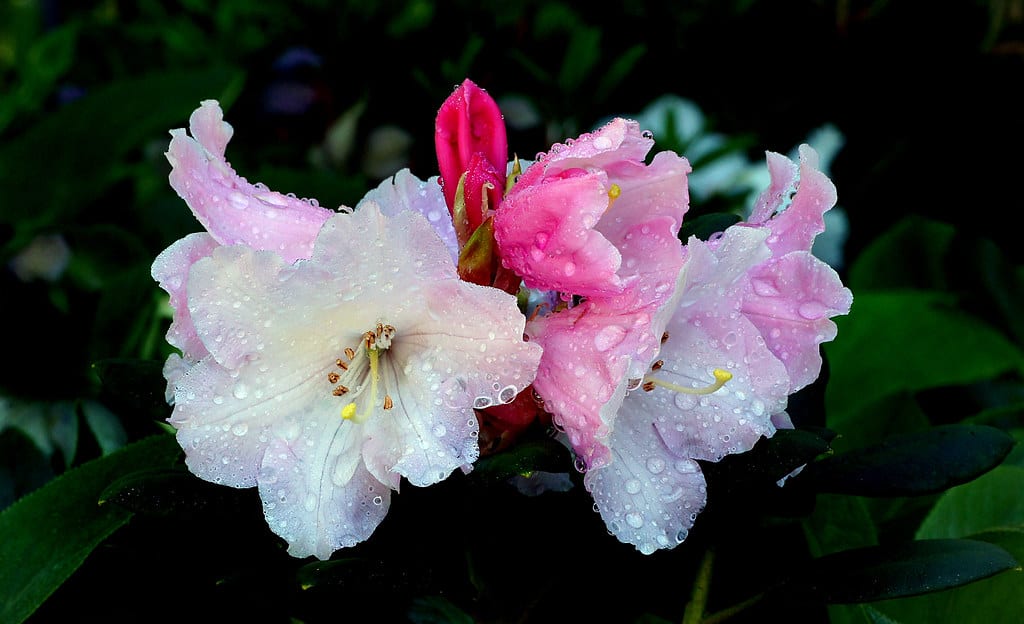
Your Encores need water to bloom by keeping the soil moist but not soggy. Provide regular watering when planting your Azalea at first. Also, keep an eye on the rainfall, as the first summer may need more watering.
After your Encores establish, they do not need a lot of water. You may find you will water more often from spring to late summer. But prevent wet soil as it can lead to root rot damaging your plants outdoors.
Temperature and Humidity
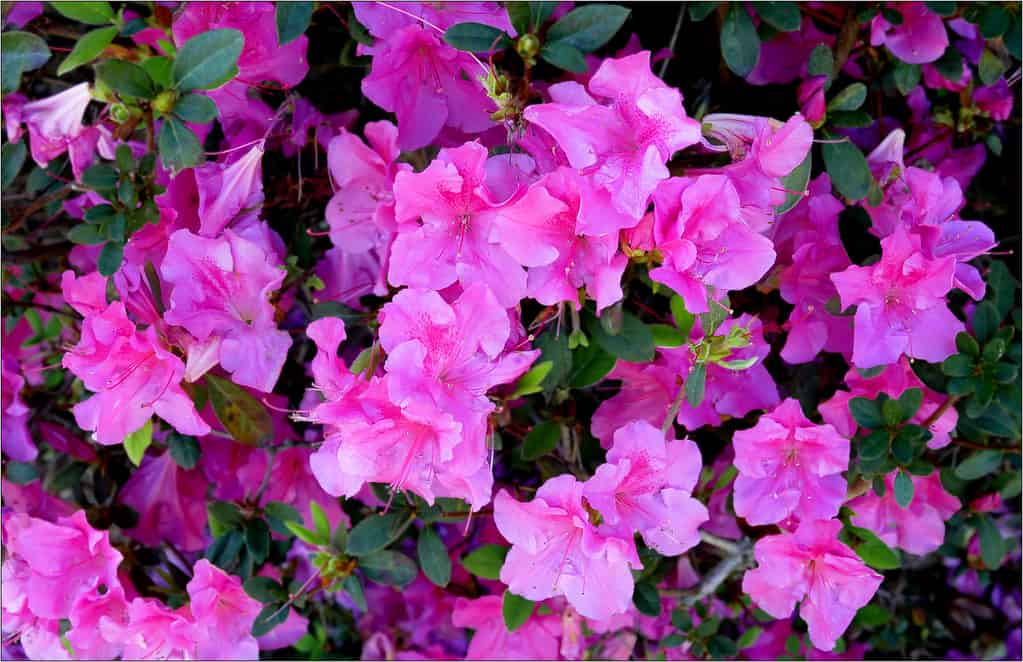
Regarding the care for Encore Azaleas, it is best to do your planting in the fall. Doing this helps the root benefit from the early root flush to flourish the next growing season. We recommend covering your young plants with some insulation when temperatures drop.
As your plant matures, it needs less winter care. You will need to water less, but check the soil to prevent the root from getting too dry. So protecting them from hard freeze helps to allow buds to form, while too hot weather will burn the flower buds.
Also, please provide them with enough air circulation and refrain from fertilizing Encore Azaleas in winter.
How To Fertilize Encore Azaleas?
The best time to fertilize Encore Azaleas is after the first spring blooms start to fade away. The problem is that when you feed your indoor plants in late winter or early spring, the fertilizer does not absorb.
The reason is that the Azalea rootlets take up less water when cold, and a balanced feed in early spring might help flush out new growth and not the blooms. Your Encore Azaleas have a natural foliage cycle that follows the spring blooms.

Hence, applying a feed now will not help improve the natural growth. So, a yearly application in spring is enough. Still, if you got your plants in summer to fall and there are still two to three months between the first frost date, you can apply a slow-release fertilizer to help produce healthy growth.
But if you have less than two months before the frost, then a rooting stimulant helps. We also recommend you do not use a liquid plant fertilizer on your new plants. The reason is that the damaged rootlet, when removed from a pot, will absorb the feed fast.
Hence, you end up with more damaged rhizomes. The best is a slow-release 10-10-10 or a 12-12-12 NPK ratio. After feeding your plants, water deeply and regularly. You have a choice of using either an inorganic or organic fertilizer.
The difference is that the inorganic one is fast-acting when applied, but some are more toxic to humans when inhaled than organic. You can only use a liquid feed when your plants are established, but it does wash out fast when it rains.
Pruning Encore Azaleas
The Encore Azaleas do well with informal growth but can benefit from light pruning. The buds start forming in summer, and the best time to prune is once the blooms drop. If you are lucky, you can enjoy a spring bloom cycle lasting into summer.
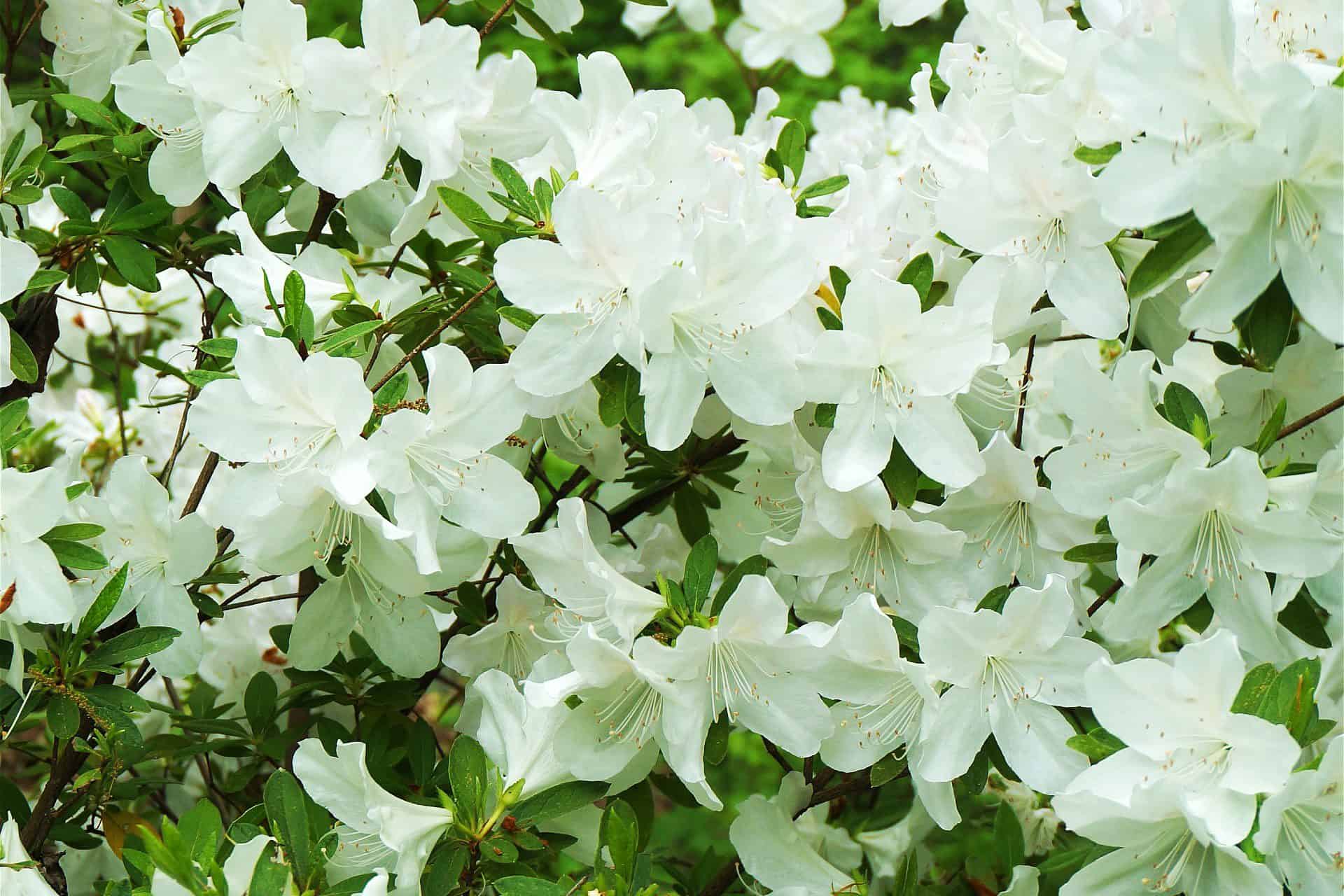
You can deadhead the blooms to give them a tidy look and will direct the energy to new growth and reblooming Encore Azaleas. But a head of warning, the new buds are already forming below the current ones, and you need to take care.
We recommend using bypass hand pruners specially made for softwood branches, stems, and leaves. Doing this will not lead to no reblooming Encore Azaleas.
Propagation of Encore Azaleas
Some ways to propagate your plant include stem cuttings, layering, and planting seeds.
Stem Cuttings
Cut some flexible tips five inches long early spring from the supple new stems.
Remove the bottom leaves and leave the top ones.
Scrap the bark at the bottom upwards about one inch and dip that end into the rooting hormone.
Place the cutting into a 50:50 mix of perlite and peat moss/perlite or sand/vermiculite/peat moss.
Choose a one-gallon pot, as it makes for an ideal growing medium.
Moisten the potting mix around your cutting and place the pot into a bag or a clear container. Place the container in bright light but not direct sun.
You can open the container daily for airflow and check if your plants are rooted. Once rooted, you can remove the bag and leave it in the pot to overwinter before planting it into the ground.
-
Free Shipping$8.96Sold By: CZ Grain
In stock
10 Orchid Tree Seeds for Planting Butterfly Tree Bauhinia purpure
Only 999 available and it’s in 1 people’s basketRated 4.60 out of 5 based on 156 customer ratings00Sold By: CZ Grain -
Free Shipping$193.17Sold By: BONSAI WORLD LLC
In stock
Pink flowering Medium azalea bonsai tree
Sold By: BONSAI WORLD LLC -
Free Shipping$145.00Sold By: Andygarden2023
In stock
white caimito- star fruit grafted tree 4ft
Sold By: Andygarden2023 -
$19.99Sold By: Cacti and Exotica
In stock
Senecio radicans | String of bananas | 6″ Pot
Rated 4.98 out of 5 based on 59 customer ratings00Sold By: Cacti and Exotica
Layering
As mentioned, find a flexible branch in early summer that can bend to the ground.
Dig a shallow trench below the branch and bend it into the channel with the tip extending into the air. Then, pin the section down with a heavy rock.
You can scrape some of the bark to sprinkle with rooting hormone over that section.
Please fill the trench with soil and leave it in place for about a year. The underside will develop new roots; once developed, you can remove the branch from the parent plant.
Carefully dig it up and transplant it into a garden area of choice.
Planting Encore Azalea Seeds
You can buy commercially or collect seed from your plant once the flower drops. Still, the process is slow and can take up to three years. Another concern is that the plant might not look like the mother plant.
When the seed pods dry and turn brown, they break open to collect the seeds. Fill a flat tray in winter with peat moss and sand. Moisten the mix and sow the seeds on the surface.
Then, cover the tray with a plastic lid and keep it in a warm, bright place but not in direct sunlight. It takes about six weeks for the seed to germinate, and you need to thin them out with a two-inch spacing in between.
When the seedling develops a pair of leaves, you can transplant them into different pots to cover with plastic and keep them in a bright spot. You can remove the plastic after two weeks, but remove it daily for fresh air.
After a full growing season, you can place them into larger pots for another year and then transfer them to your garden during fall to grow into a shrub.
Azaleas Varieties
In the Azalea shrub, you can find different varieties to add color to your garden. Here are some of our favorites:
‘Rosy Lights’
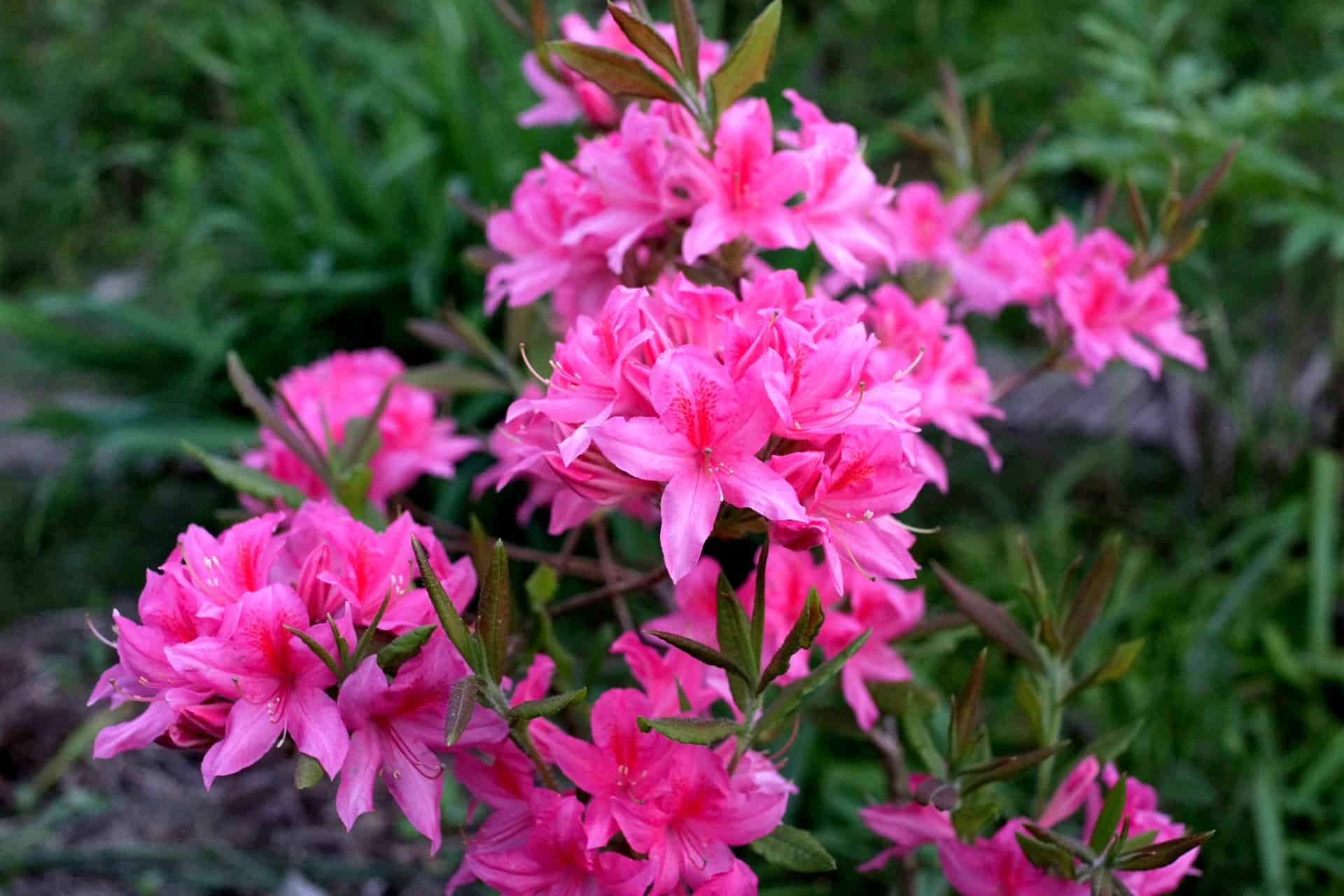
The Azalea foliage has compact growth and is cold-hardy, with vibrant blooms in a rosy red color. It also has hues of blush and coral. It is part of the Northern Lights series and blooms in trusses, not a round shape.
‘Windbeam’
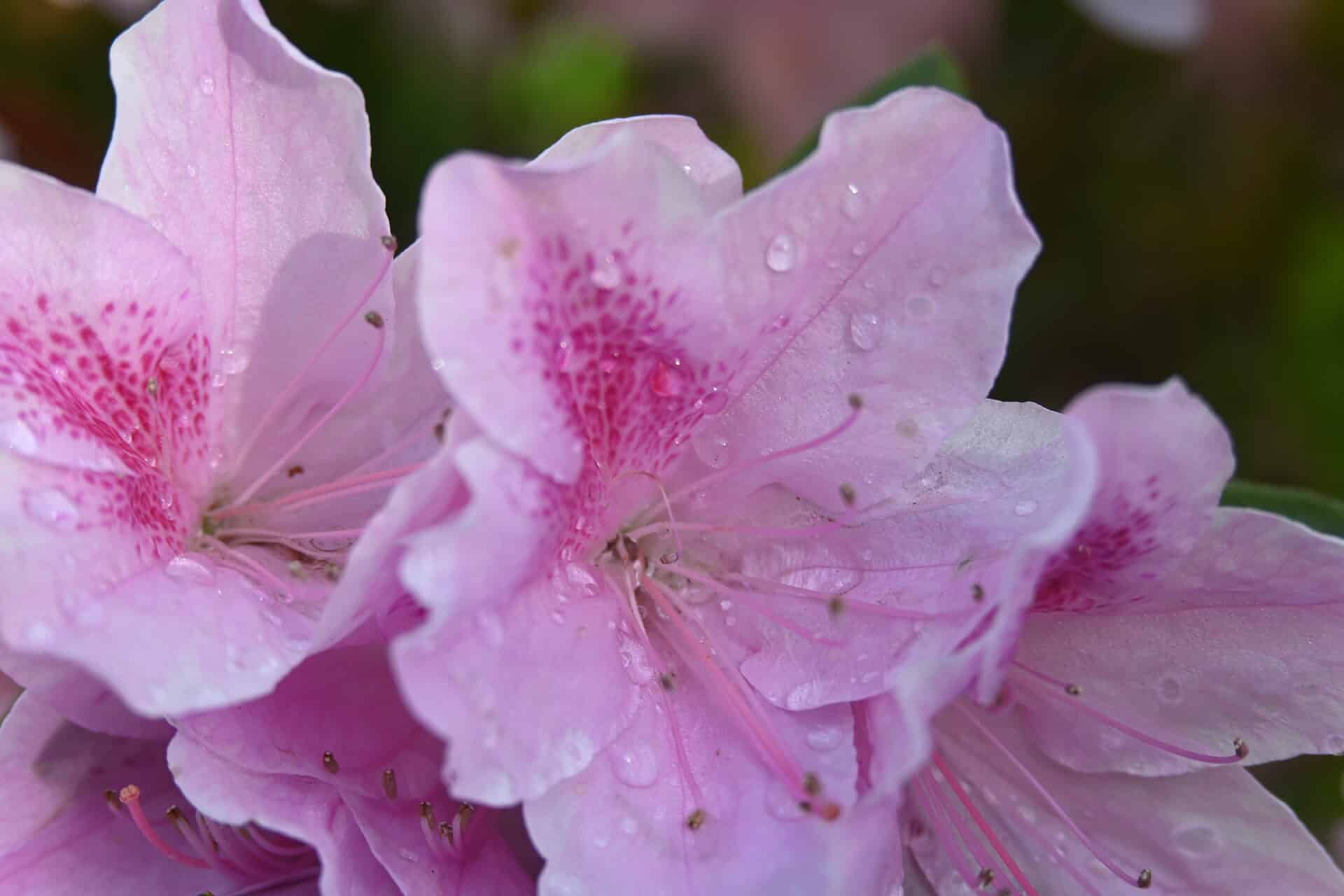
The shrub has smaller leaves and grows in a tidy habit with bright pale pink blooms with olive green foliage. The leaves turn bronze in fall, but they need sheltering during winter.
‘Golden Lights’

The plant displays bright golden-orange blooms with dramatic colors in the landscaping. It is cold, hardy, and compact, with flat bloom trusses containing up to ten blooms. The hues range from butter yellow to orange, with salmon pink highlights.
Encore Azaleas Common Diseases and Pests
The Encore Azaleas are bothered mainly by aphids, lace bugs, borers, mealy bugs, scale, thrips, whiteflies, leafhoppers, and mites. It helps us use neem oil to address these insects or introduce predatory ones. Alternatively, you can also use insecticidal soap on infestations.
Some plant diseases are leaf spots, canker, rust, and powdery mildew. These diseases cause more cosmetic damage, but you can treat them with a fungicide. Another concern is root rot with signs of leaf wilting, dying back of stems, and death.
We recommend not leaving your plant in constantly soggy soil. Preferably give a good deep soaking, allowing the water to drain freely away. Leave the soil on the dry side before watering again.
Frequently Asked Questions
Most traditional Azaleas remain in bloom for two weeks depending on rain and wind damage. Yet, these plants remain early bloomers, except the Encore Azalea.
It is essential to provide them with a balanced fertilizer, enough sun, and dappled shade. If you have potted Encore Azaleas that are root bound, they may not bloom.
The same applies to improper deadheading when pruning.
Yes, as your Encore Azaleas is an acid-loving shrub, it can benefit from the Miracle-Gro plant food. We recommend the Miracle-Gro 1000701 Pound.
You can feed your acid-loving plants like the Encore Azaleas with coffee grounds. You can do this by placing it around the soil as it increases the nutrients and acidity.
Encore Azaleas can be grown in containers, making them suitable for patio gardens or small spaces. Use a well-draining potting mix and provide regular care, including watering and fertilizing.
Yes, Encore Azaleas are known to attract pollinators such as bees and butterflies with their colorful and nectar-rich flower buds.
Encore Azaleas are generally considered disease-resistant when grown in appropriate conditions. However, like all plants, they can be susceptible to certain pests and diseases, so monitoring and proper care are essential.
Whether you want to buy, sell or simply reach out to other plant enthusiasts, Plantly is the right place to be!
-
Free Shipping$19.99Sold By: D&D simplicity products
In stock
Succulent Arrangement in Mini Cat Planter
Sold By: D&D simplicity products -
Free Shipping$19.99Sold By: Gar-Zen Botanical Design
In stock (can be backordered)
Kalanchoe Gastonis bonnieri Donkey Ear Ships Free.
Only 7 available and it’s in 2 people’s basketRated 4.86 out of 5 based on 49 customer ratings00Sold By: Gar-Zen Botanical Design -
$25.00Sold By: That Wild Yard
In stock
Rare Plumeria, Madame Poni, 15+ in cutting
Sold By: That Wild Yard -
$10.00Sold By: Smoot's Farm
In stock
Air Plant Shirley Temple
Only 11 available and it’s in 2 people’s basketRated 4.89 out of 5 based on 27 customer ratings00Sold By: Smoot's Farm

